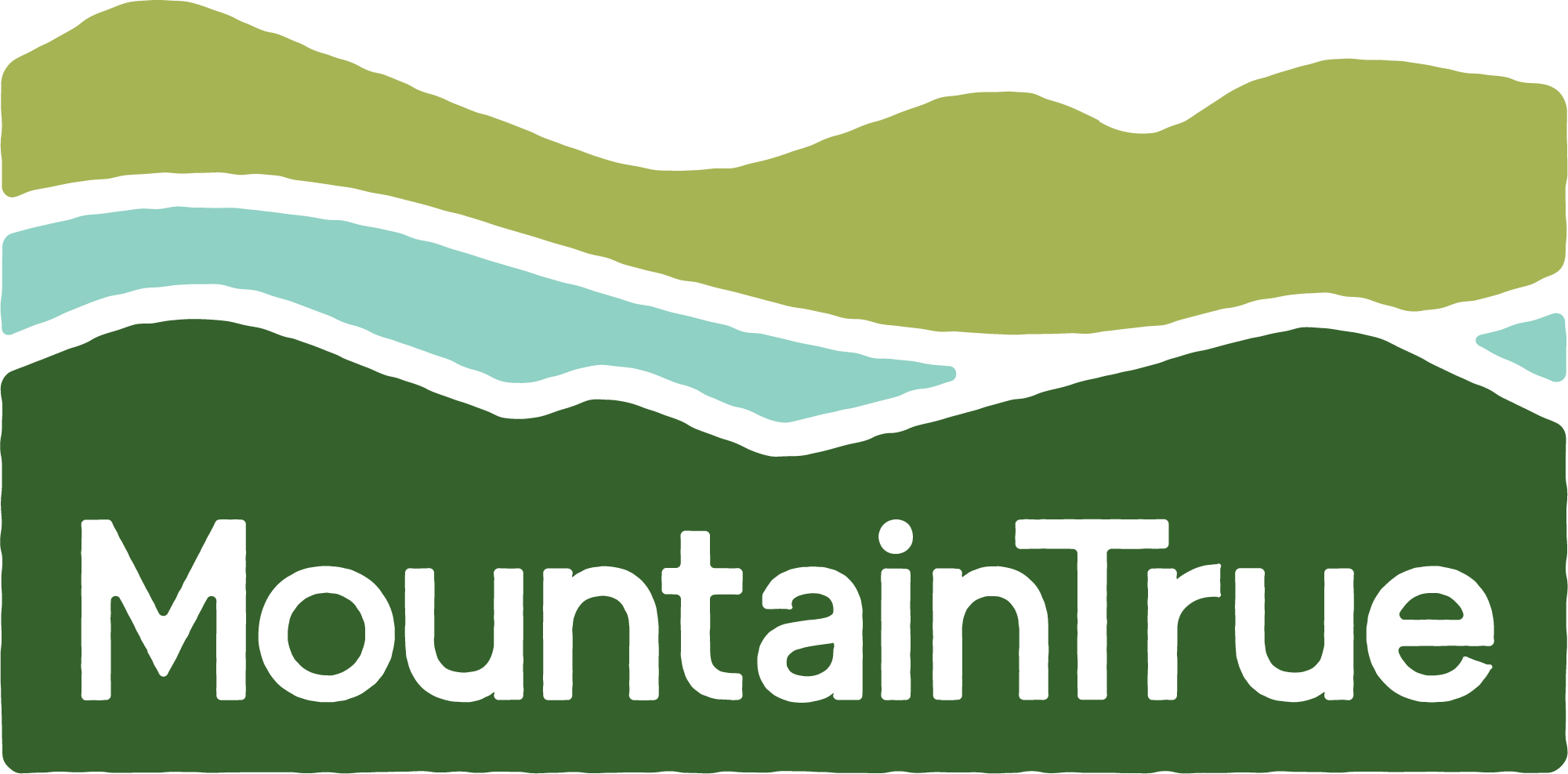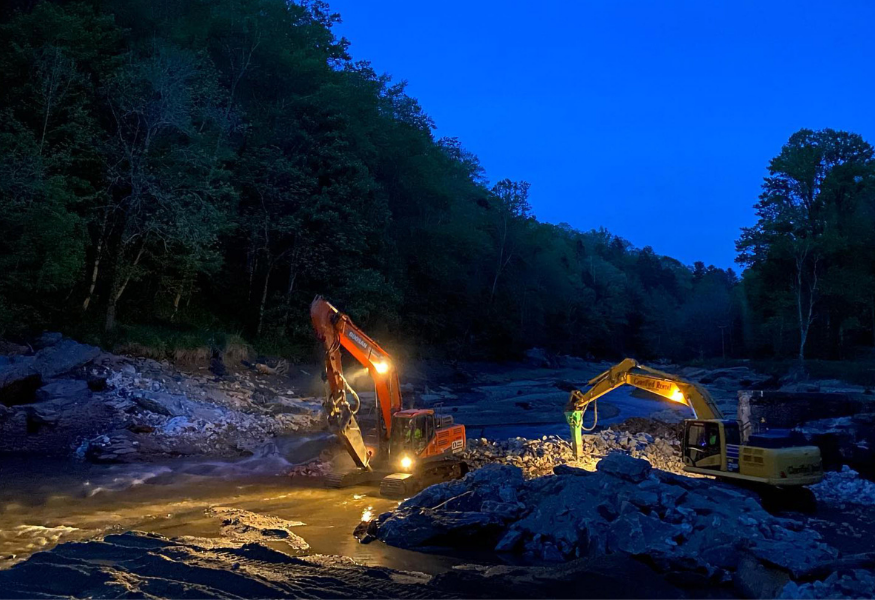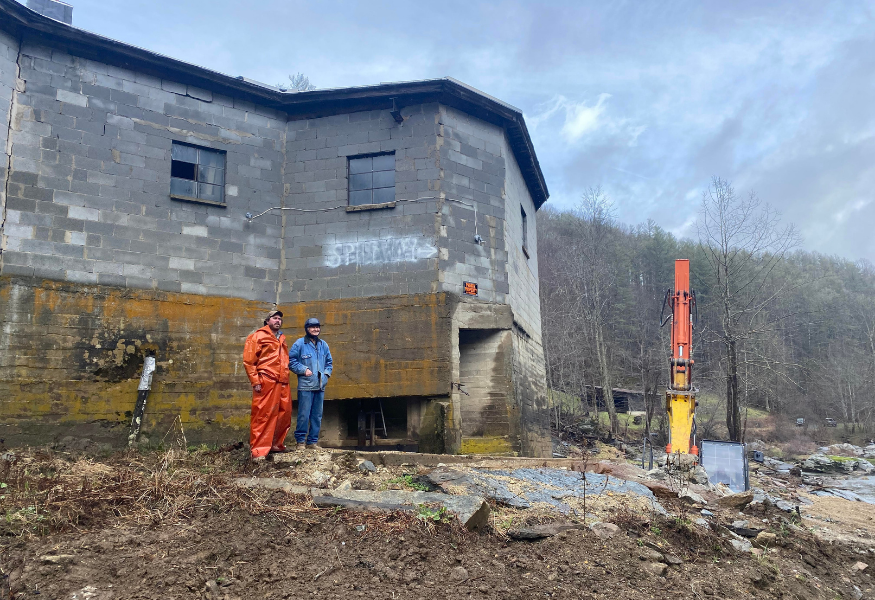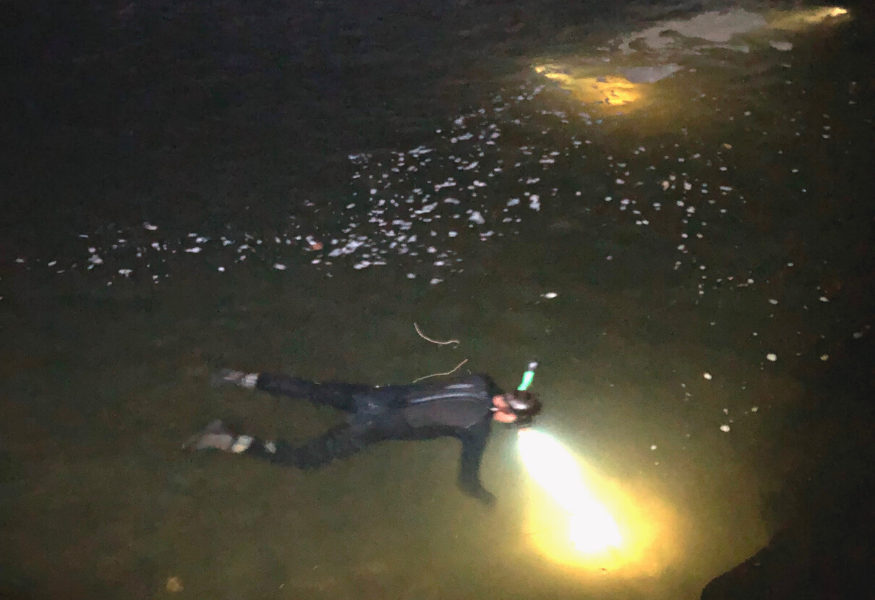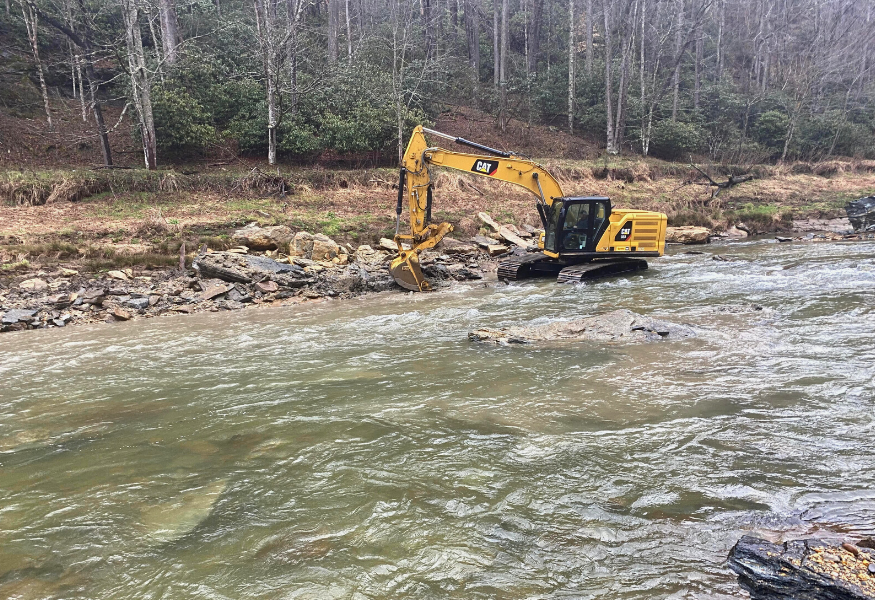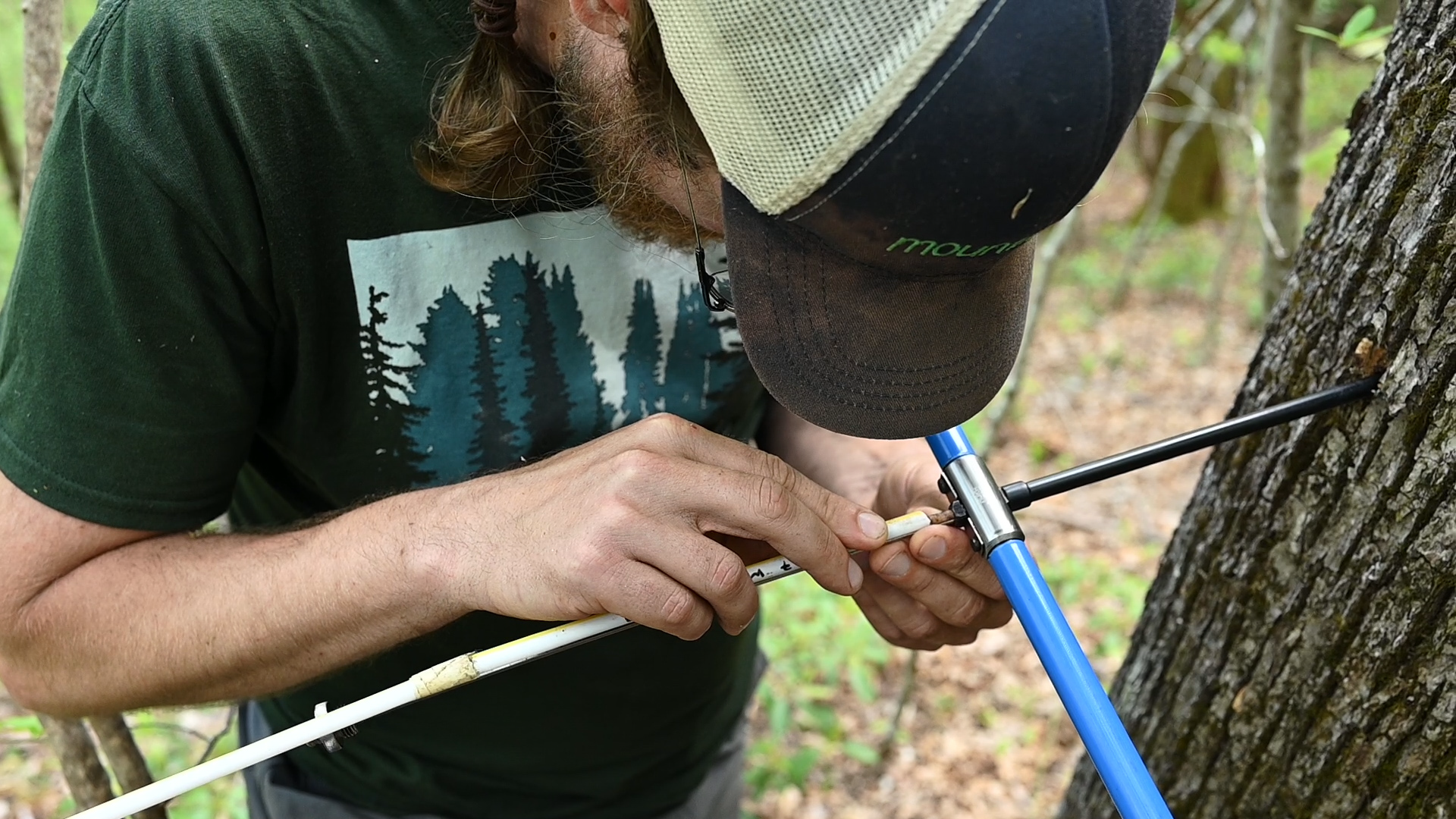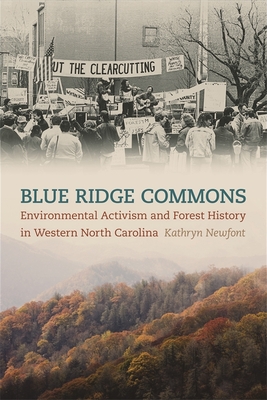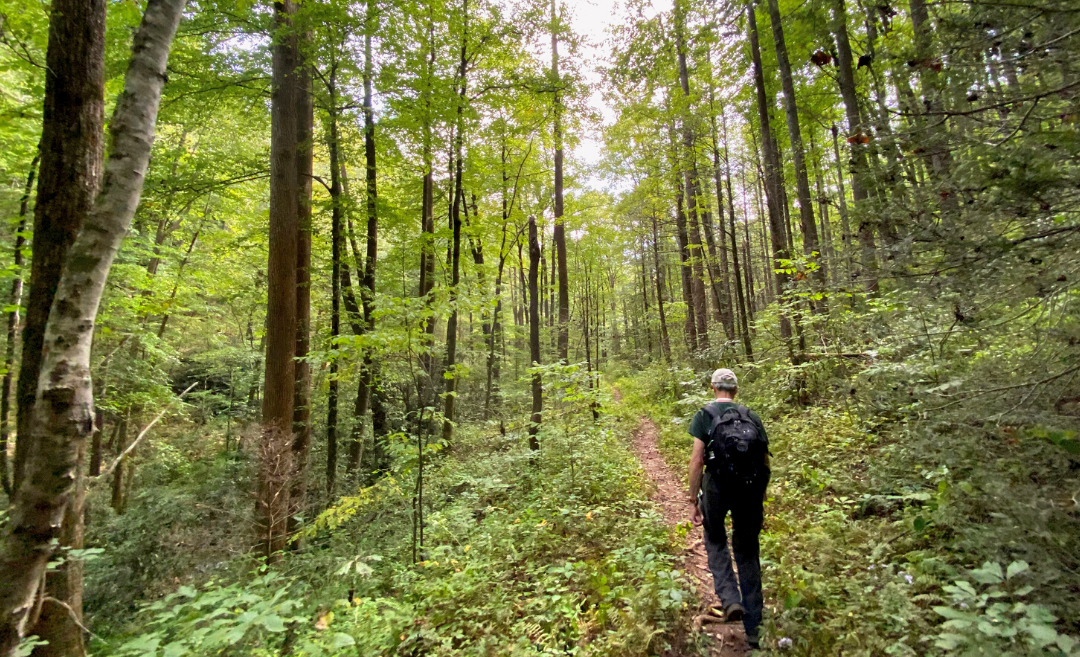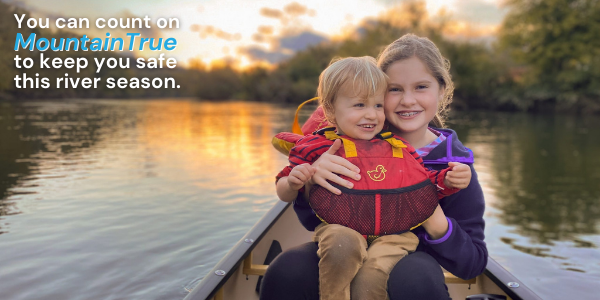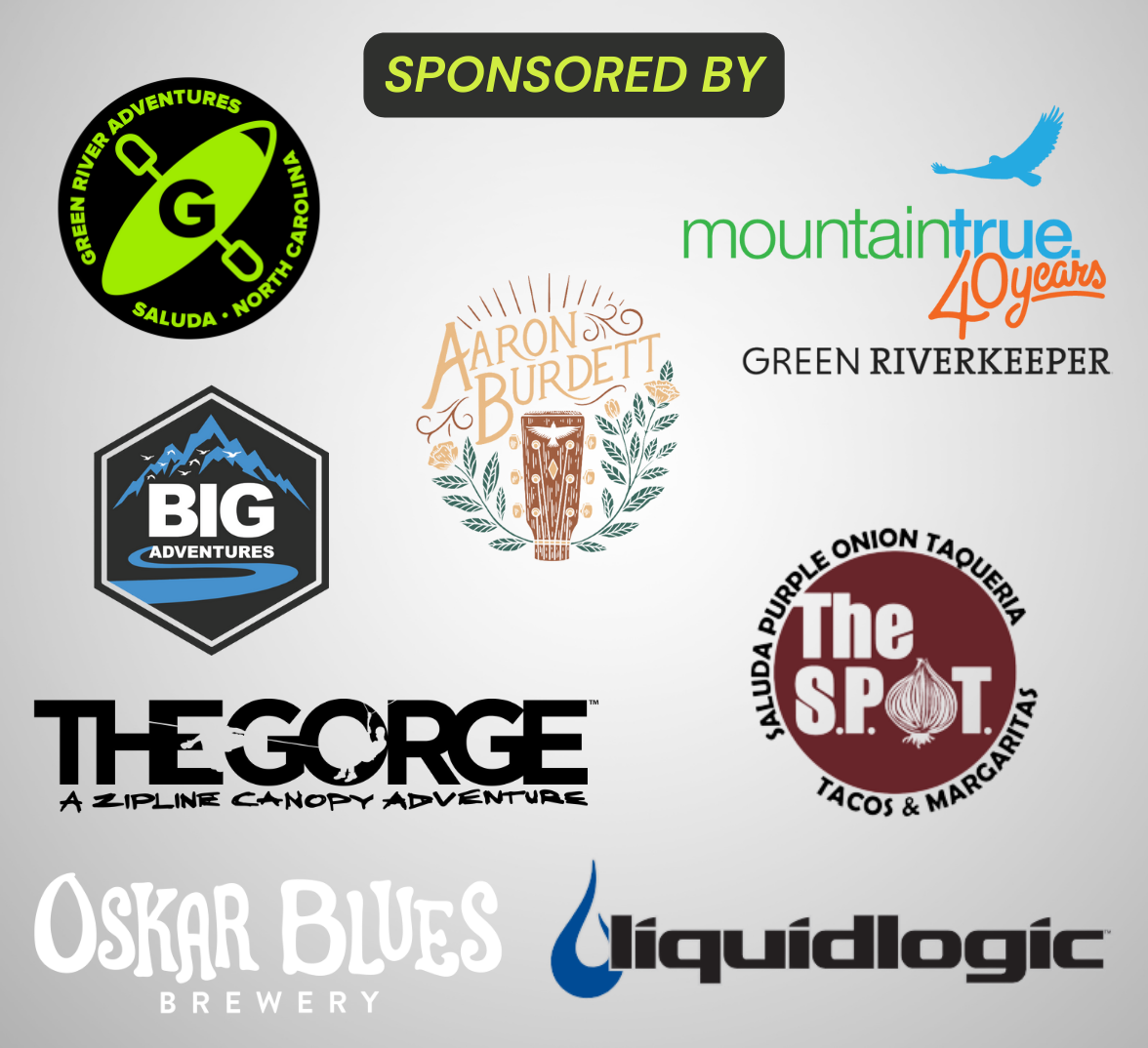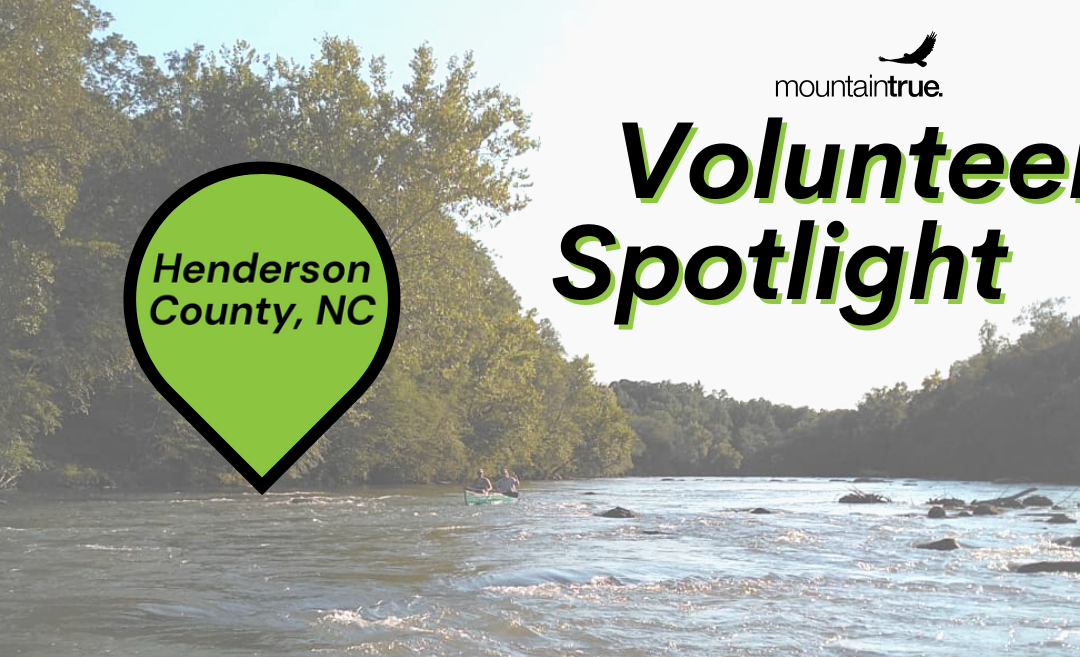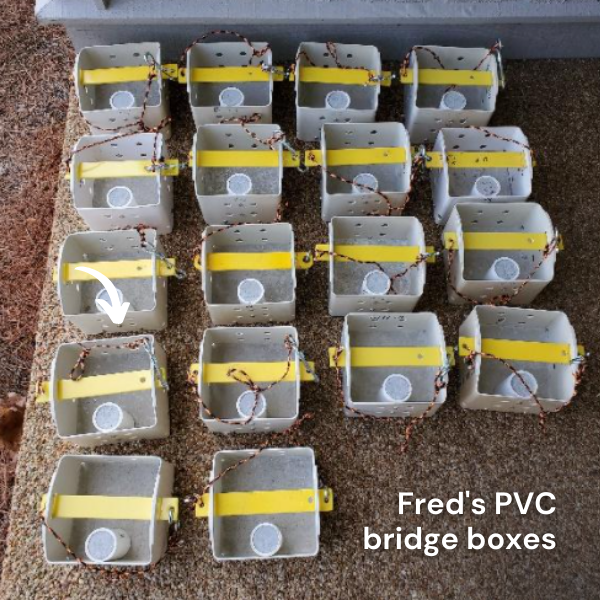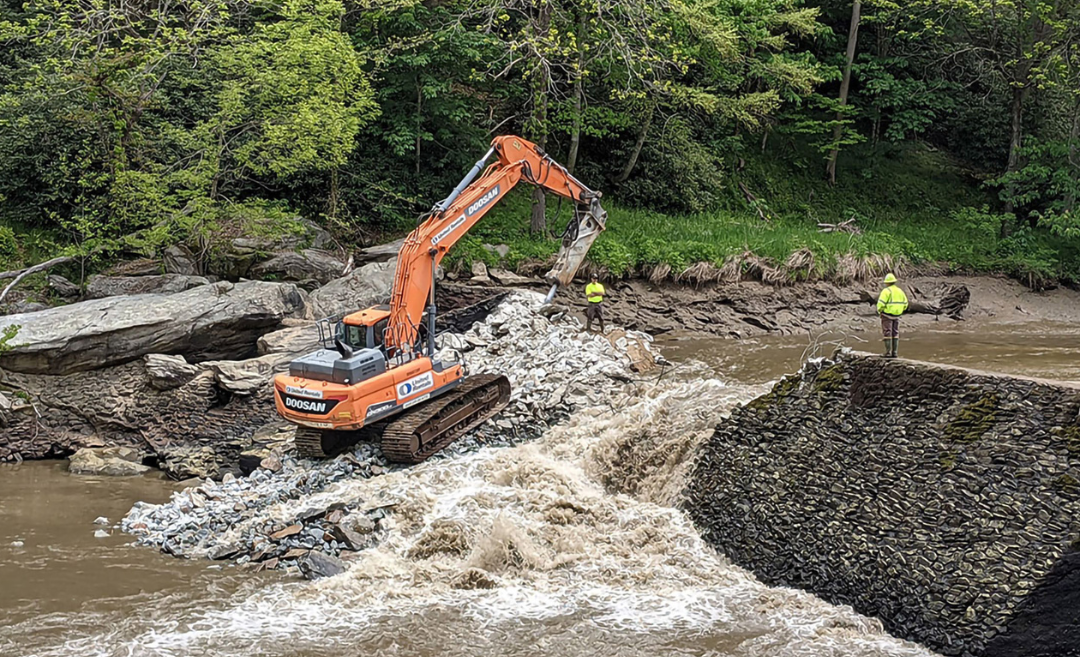
Removing the Ward’s Mill Dam and Reconnecting Aquatic Habitats
Removing the Ward’s Mill Dam and Reconnecting Aquatic Habitats
Pictured above: Deconstruction of the Ward’s Mill Dam near Boone, North Carolina. See more photos in the blog gallery below.
By Andy Hill, Watauga Riverkeeper and MountainTrue High Country Regional Director
In a huge win for local aquatic wildlife, the Ward’s Mill Dam has finally been removed! The dam removal process was a three-year effort that was well worth the wait. Working in partnership with American Rivers, Blue Ridge Resource Conservation and Development, Watauga County Soil and Water Conservation District, and the US Fish and Wildlife Service, this $1.2 million project reconnected 35 miles of aquatic habitat in the main stem of the Watauga River and 140 miles of streams across the watershed. Now, populations of native fish species — like the tangerine darter — and threatened salamanders — like the hellbender — are reunited and will benefit from an improved cold-water habitat.
Located just a few miles from Boone, North Carolina, the dam was originally constructed in 1890 and underwent some structural improvements over the years. The mill complex served the surrounding community for generations by providing electricity, jobs, firewood, and building materials. However, the dam had been an obstacle for local aquatic wildlife for the past 130 years. The dam removal was a high priority for experts and biologists and was considered to be a top priority project by both the Southeast Aquatic Resource Partnership and the North Carolina Aquatic Barrier Assessment Tool.
Dam deconstruction began in May 2021 and was performed by Wildlands Engineering and the Aquatic Restoration team from the US Fish and Wildlife Service’s National Fish Passage Program. Project funding was generously provided by the North Carolina Division of Water Resources, Patagonia, the Bonneville Environmental Foundation, Beech Mountain Resort, Hunter Banks of Asheville, and Boone’s Fly Shop.
MountainTrue’s Watauga Riverkeeper, Andy Hill, is excited about the environmental benefits of the dam removal and the opportunity to create more recreational opportunities by connecting the Watauga River Paddle Trail to the section of the Watauga once occupied by the Ward’s Mill Dam. “We’ve greatly improved aquatic habitat and river health,” says Hill, “and we’ll continue to promote safe river recreation while honoring the historical and community cultural value of the Ward Mill.”
The Ward family continues their generations-long environmental stewardship by removing this aquatic barrier and graciously surrendering their hydropower license with the Federal Energy Regulatory Commission. While the instream dam structure has been completely removed down to bedrock to reconnect the watershed and allow for sediment transport downstream, the iconic sawmill, historic buildings, and complex have been preserved in partnership with the State Historic Preservation Office. Please respect the decision and the privacy of the Ward family at this time.
“We are excited to see the long-term environmental benefits associated with removing the dam, but are also excited about preserving the rich history of the dam complex by documenting and saving the nearby historic buildings,” explains Jonathan Hartsell of Blue Ridge Resource Conservation and Development. “This complex project has been successful from start to finish due to a well thought out gameplan from the project management team, agency partners, and most importantly, the landowners.”
The complex project required careful execution to maintain the delicate biodiversity of the Watauga River and its streams. Dr. Mike Gangloff and Dr. Derek Martin of Appalachian State University led a team of researchers to collect valuable aquatic habitat data before and after the dam removal. The research team conducted sediment flow research, aquatic habitat surveys, and numerous nocturnal scuba dives to search for the elusive nocturnal hellbender salamander. The team’s sediment flow research and aquatic habitat surveys will better inform future dam removal projects and contribute to the field of knowledge for river restoration.
While they offer benefits in certain circumstances, dams can also significantly damage rivers. Dams increase water temperature, reduce river flows, lessen the amount of dissolved oxygen required by fish, amphibians, and other aquatic species, and block the natural flow of sediment and debris. Dams also serve as physical barriers for river recreationalists such as paddlers and anglers, as well as aquatic wildlife. Additionally, most dams require frequent maintenance, and many require removal or rebuilding after 50 years.
“Rivers are like a circulatory system, and thanks to this dam removal, American Rivers and our partners celebrate a free-flowing Watauga River, which is the lifeblood of a thriving community, healthy ecosystems, and clean water for people and nature,” says Erin McCombs, American Rivers Science Program Director and Southeast Conservation Director.
Just over one-year post-removal, life has returned to this section of the Watauga River in a major way. Over 5,000 live stakes and 600 pounds of wildflower seed have been planted in the riparian zone along the river banks. These plantings will help shade the stream, prevent erosion, filter stormwater runoff, and create new aquatic habitats. Life has also returned under the river’s surface, with post-removal surveys showing a rise in both numbers and diversity of macroinvertebrates and fish species such as tangerine darters and war paint shiners. Juvenile hellbenders and hellbender eggs have also been discovered well upstream of the removal site for the first time in many years!
“We’re encouraged by this progress and the increased biodiversity that is returning to this stretch of the Watauga River,” says Watauga Riverkeeper Andy Hill. “We’re forever grateful MountainTrue members because their support enables us to accomplish transformational watershed projects such as this.”
Gallery photos: Nighttime deconstruction of the Ward’s Mill Dam; Watauga Riverkeeper Andy Hill and colleague stand in front of the mill; Andy Hill searches for hellbenders below the dam site; an excavator clears debris from the Watauga River.
